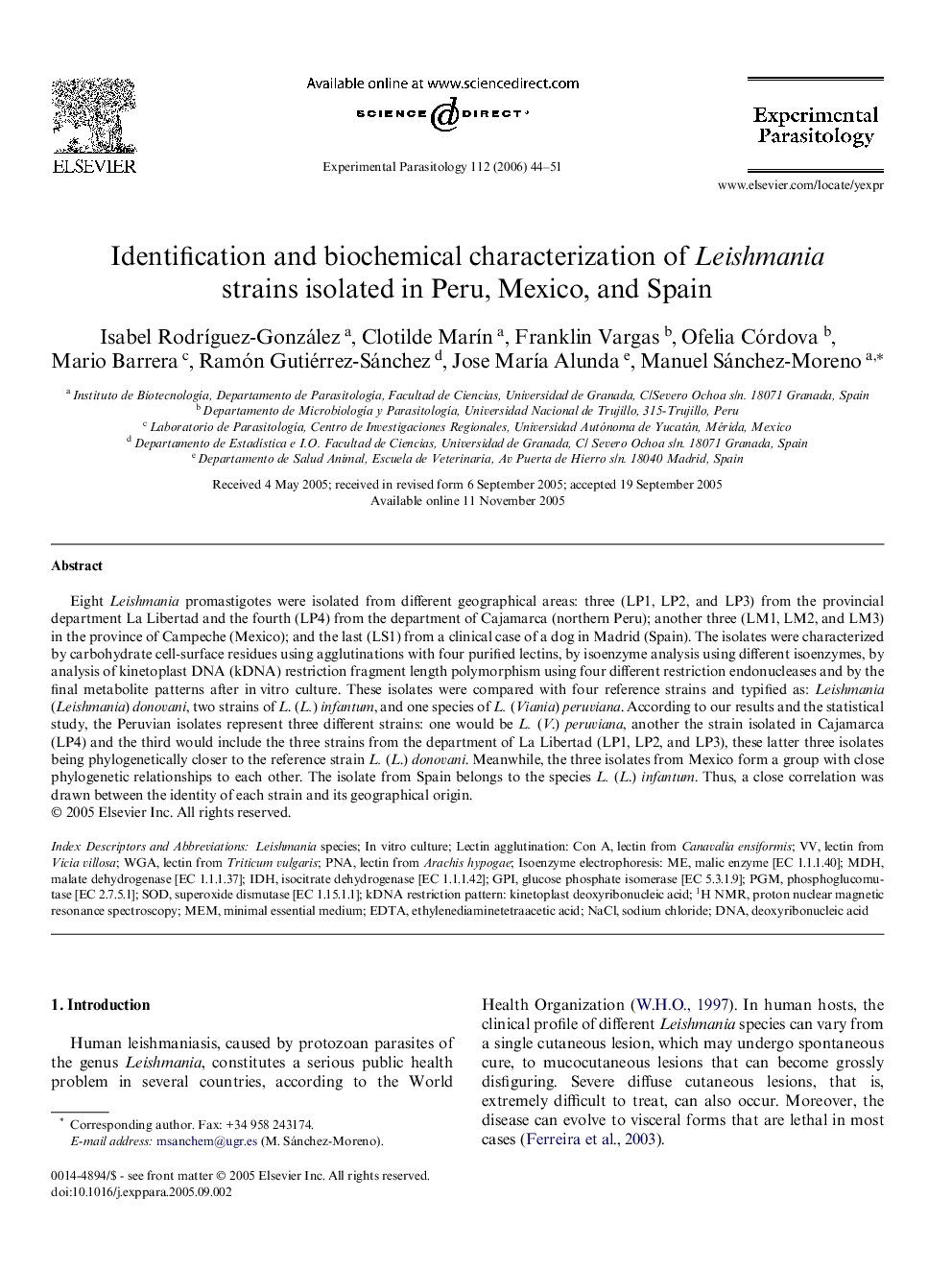| Article ID | Journal | Published Year | Pages | File Type |
|---|---|---|---|---|
| 4372272 | Experimental Parasitology | 2006 | 8 Pages |
Abstract
Eight Leishmania promastigotes were isolated from different geographical areas: three (LP1, LP2, and LP3) from the provincial department La Libertad and the fourth (LP4) from the department of Cajamarca (northern Peru); another three (LM1, LM2, and LM3) in the province of Campeche (Mexico); and the last (LS1) from a clinical case of a dog in Madrid (Spain). The isolates were characterized by carbohydrate cell-surface residues using agglutinations with four purified lectins, by isoenzyme analysis using different isoenzymes, by analysis of kinetoplast DNA (kDNA) restriction fragment length polymorphism using four different restriction endonucleases and by the final metabolite patterns after in vitro culture. These isolates were compared with four reference strains and typified as: Leishmania (Leishmania) donovani, two strains of L. (L.) infantum, and one species of L. (Viania) peruviana. According to our results and the statistical study, the Peruvian isolates represent three different strains: one would be L. (V.) peruviana, another the strain isolated in Cajamarca (LP4) and the third would include the three strains from the department of La Libertad (LP1, LP2, and LP3), these latter three isolates being phylogenetically closer to the reference strain L. (L.) donovani. Meanwhile, the three isolates from Mexico form a group with close phylogenetic relationships to each other. The isolate from Spain belongs to the species L. (L.) infantum. Thus, a close correlation was drawn between the identity of each strain and its geographical origin.
Keywords
Related Topics
Life Sciences
Immunology and Microbiology
Parasitology
Authors
Isabel RodrÃguez-González, Clotilde MarÃn, Franklin Vargas, Ofelia Córdova, Mario Barrera, Ramón Gutiérrez-Sánchez, Jose MarÃa Alunda, Manuel Sánchez-Moreno,
